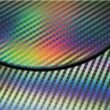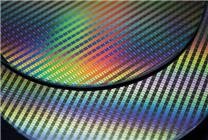Historic Milestone in Domestic Semiconductors: SMIC Surpasses One Trillion Yuan Valuation
Summary:
- Semiconductor company SMIC achieves a market value of over 1 trillion yuan.
- The company is reportedly testing its first domestic DUV lithography machine, a significant leap for Chinese semiconductor manufacturing.
- This marks a pivotal moment as SMIC shifts away from reliance on imported equipment.
In a remarkable turn of events, China’s semiconductor industry has witnessed a significant milestone: Semiconductor Manufacturing International Corporation (SMIC) has seen its total market value exceed 1 trillion yuan. This achievement, known as a pivotal moment for domestic semiconductors, reflects the growing strength and ambition of China’s technological landscape.
On September 18, domestic financial reports highlighted that SMIC’s A-share transaction volume skyrocketed, surpassing 10 billion yuan for the day, with stock prices climbing as much as 7.9%. The surge in SMIC’s stock value is closely linked to emerging rumors that the company is in the process of testing an indigenous deep ultraviolet (DUV) lithography machine developed by Shanghai startup Yuliangsheng.
Historically, SMIC has relied heavily on DUV lithography equipment imported from ASML, a leading semiconductor equipment manufacturer based in the Netherlands. However, recent U.S. export controls have restricted access to more advanced technologies, forcing SMIC to adapt by utilizing older models. The new DUV lithography machine represents a significant step forward in reducing this dependency on foreign technology.
Advancements in Technology
According to insightful sources, SMIC is currently testing a 28-nanometer DUV device, employing multiple exposure techniques in its aim to produce 7-nanometer chips. The capabilities of this equipment suggest a potential to stretch its applications further, theoretically capable of producing 5-nanometer processors. However, the projected yield for these more advanced chips would be low, indicating that while the technology shows promise, it still faces challenges in mass production.
The introduction of domestic production capabilities in DUV lithography is a cornerstone for China’s ambition to fortify its semiconductor industry. By developing its equipment, SMIC not only aims to improve its output but also seeks to position itself as a key player on the global stage, potentially reducing its vulnerability to international trade restrictions.
Strategic Implications
This development has broader implications for the semiconductor industry, both within China and globally. If successful, SMIC’s advancements in domestic DUV lithography could incite intensified competition in the semiconductor market, challenging established players and altering the technological dynamics.
-
Indigenous Technology Development: The shift towards domestic DUV lithography machines symbolizes a crucial move towards technological self-sufficiency in China’s semiconductor sector.
-
Market Dynamics: As SMIC enhances its manufacturing capabilities, it may reshape supply chains and disrupt existing relationships in the semiconductor industry, thereby increasing competition.
- Investment in Innovation: This achievement may stimulate further investment in domestic semiconductor research and development, encouraging start-ups and established firms to enhance their technological capabilities.
In conclusion, SMIC’s surpassing of the 1 trillion yuan market value is not just a financial success but a marker of the evolving landscape in the global semiconductor industry. The developments surrounding the domestic DUV lithography machine signal a crucial move toward greater self-reliance and innovation within the Chinese semiconductor sector. As the landscape continues to evolve, stakeholders will be watching closely to see how these advancements impact the broader market and international relations in technology.
This transformative moment in the semiconductor field reinforces the significance of innovation and investment in local technology solutions. As SMIC embarks on this new chapter, the industry remains poised for further breakthroughs that could redefine its trajectory and influence in the global market.










